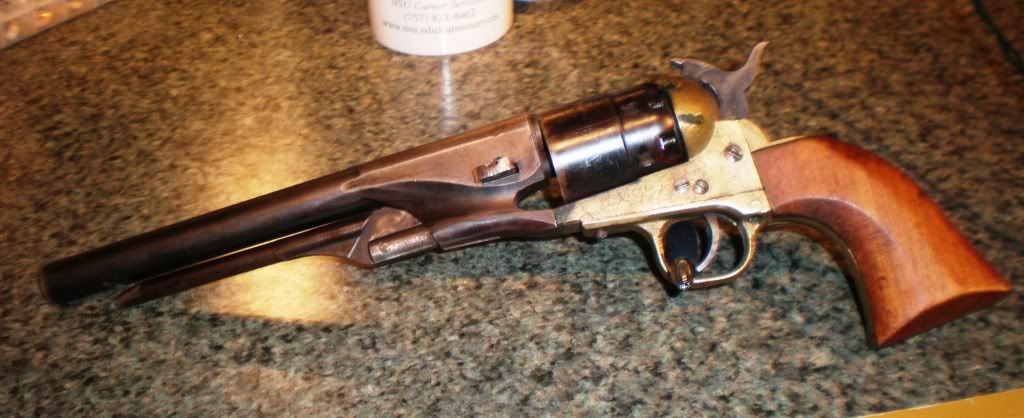Well I bought a barrel catch from DGW....
...but the more I looked at the barrel, the more I realized that the original owner had taken a file to the dovetail on the bottom of the barrel. There was no dovetail left, only 90 degree walls. I don't know how the guy intended to put the barrel catch into the barrel.
There is no way a standard barrel catch will work because the base of the dovetail (what is left of it) is wider than the base of a barrel catch. Consequently I had to make a barrel catch with an oversized base. I also had to go to town on the barrel with a file to put angles in the barrel to catch the dovetail of the barrel catch.
I started with a piece of 3/4 inch round stock and milled it down to the right profile to catch the dovetail I filed in the barrel.
Next I releaved the catch to allow for the length of the loading lever.
I smoothed the contour of the catch on a belt sander. (Steel gets hot pretty quick and it is hard to hold onto the piece of steel which is roughly 3/8 by 3/8 by 1/2 with ungloved fingers.)
I drove the catch into the barrel .
Notice that the catch has not been finish to accept the lever latch, because I don't yet know where it is going to need to be filed.
I also mate a sight for the pistol. Here it is with both parts in place.











